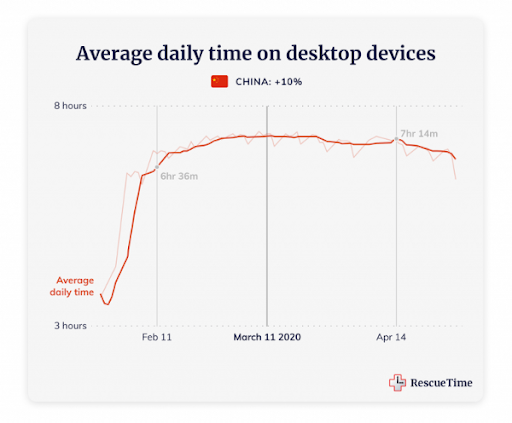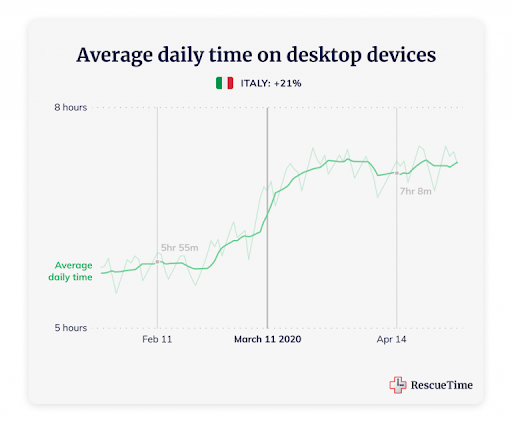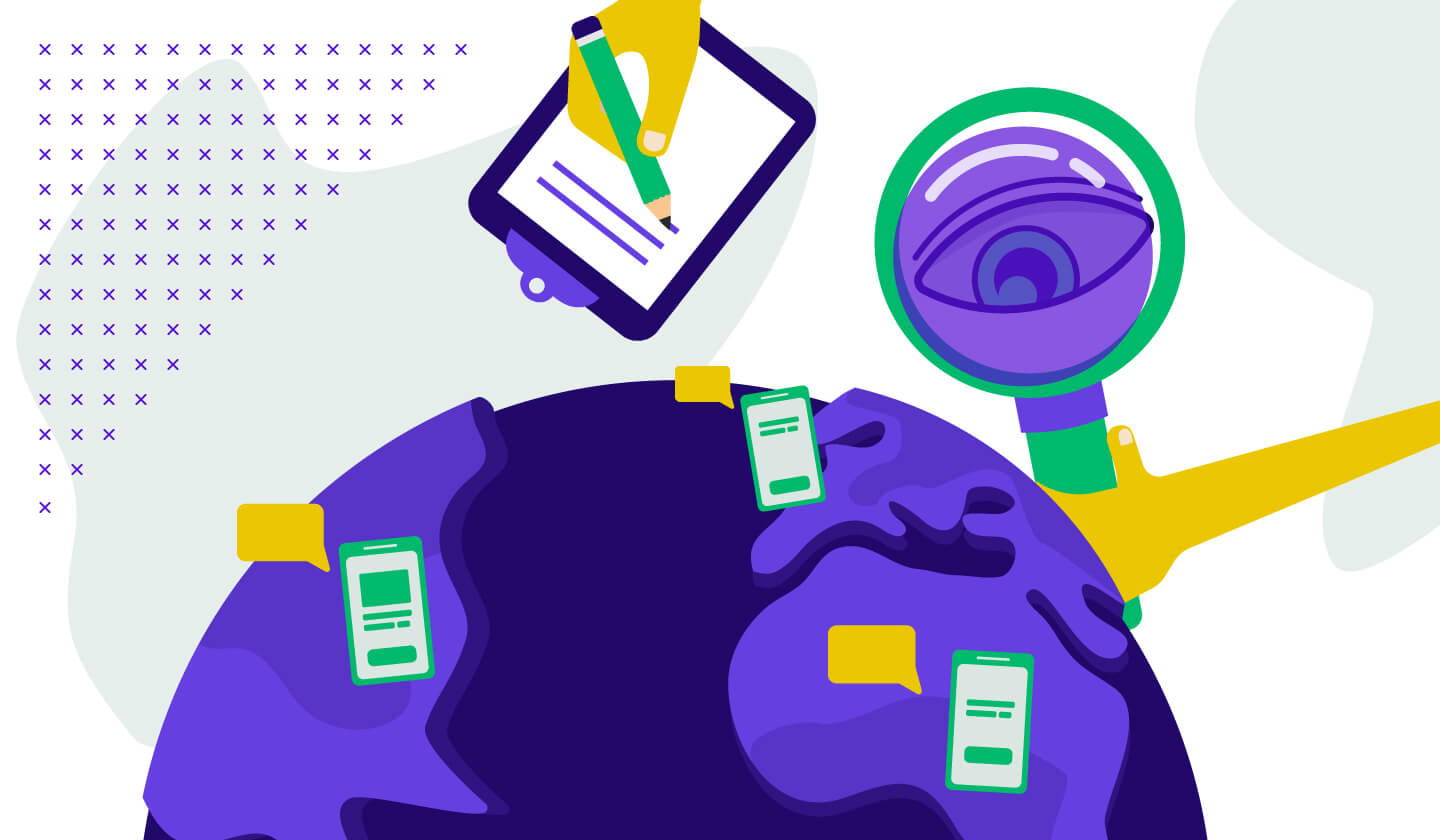Contents
With the COVID-19 pandemic and the world changing around us, I began to wonder how the work we do as UX Researchers is impacted and, more importantly, what we can do to improve the world through human-centered design.
The enormous impact of the coronavirus outbreak on UX Research got explored in innumerable blog posts, articles in journals, and online workshops that have appeared over the year.
What I am concerned with is finding answers to some urgent questions: How do we conduct ethnographic research at the time of the pandemic? And how do we make sure that this crisis does not force the next generation of UX Researchers — who have had to interrupt their field research or were prevented from beginning it — to cease activities altogether or hinder them from properly learning the tools of our trade?
With all the talk of economic impact, budget cuts, and businesses shutting down entirely, I expected that there would be a slowdown in the research process. It turns out that, even with all the disruptions to work and to the economy as a whole, budget cuts aren’t always a concern.
Due to the pandemic, we can expect that contextual studies will be off, and everything will be forced into a remote setting at least until 2022.
Despite the limitations and disruptions posed by these troubled times, there is an opportunity for organizations to increase their level of remote research to ensure that the quality of research satisfies business needs. Now is the time for researchers to refine the methodologies and procedures that can make the research successful until it can be face-to-face again.
Understanding the pandemic and its implications
Due to the pandemic, people are spending more time than ever on their devices. This also has an impact on how users interact with apps and technologies in general. The question is no longer whether users are spending more time on their devices — they are. It’s how much their usage behaviors have already changed.
“Prior to March 11th 2020 (the date when the WHO declared the spread of Covid-19 a pandemic and the US imposed strict travel restrictions), people in the US were averaging 5 hours and 58 minutes of device time a day. But just a month later, that number jumped to 6 hours and 54 minutes a day and continues to climb.
While 56 minutes a day might not seem like much, if this average increase held up across the population of US knowledge workers, we’re talking about 5.6 million hours of extra screen time a day. These numbers aren’t likely to change any time soon (according to countries that got hit earlier)” — Rescue Time



What can research do in times like this?
The good news for UX Researchers who have to conduct ethnographic research at this time is that users are also spending more time at home and on their mobile or computer screens. At this time, when people leave prints of their daily activities online — remote work, communication, ordering groceries, clothes, food — research must depend heavily on online ethnographic research.
So how can we conduct digital ethnographic research that feeds business needs and UX Design on the go?
We will do what we can do with all the limitations. We can admit that online research methods cannot, over the long term, substitute field research on site. But since the pandemic has relocated social life to the virtual space of the internet, we have to adapt our methods to online research. Digital ethnography can provide insights into the very specific spaces of the online world, where other rules apply than in the realm of offline social interactions.
Thinking ethnographically even in the times of the remote work
The ubiquity of smartphones, increase in screen time, and mobile app usage provides an opportunity for remote ethnographic research. At the time of the pandemic, this method is a feasible and scalable solution.
Screen time provides businesses with a sea of quantitative data and analytics. Mobile and virtual ethnography offer the ability to interpret the data, find the signal in the noise, and surface actionable insights.
Big data and analytics are great at surfacing the what and the when and sometimes the where. But they fall short when it comes to explaining why people behave the way they do. Let’s dive into some methods and online ethnographic observations that grasp the why.
1. Mobile ethnography
Before Uber and Lyft, if you wanted to get a taxi, you had to find and hail one. Now the taxi comes to where you are.
In the same way, 4G powered mobile ethnography, and empowers researchers and brands to understand in-the-moment, in-context consumer behaviors across multiple countries at scale.
Instead of flying around the world to observe how consumers behave in their everyday contexts, mobile ethnography enables researchers to do remote qualitative research and bring these cultural insights to design, at scale, and in real-time.
Although different types of digital ethnography methods have been utilized in social sciences in the past 25 years, it is still a novelty to use such methods in UX Research. And therefore, there are no standard practices for remote ethnography — be it mobile or virtual ethnography — in UX.
Considering the fact that people have become so comfortable using smartphones, asking them to snap a photo or record a quick video is no longer a big deal. It’s second nature.
Advantages
Mobile ethnography provides an exceptional advantage over in-person ethnographic research. All in-person methodologies require a researcher to be physically present, and hence, they are invasive and interruptive. In some shape or form, they suffer from the “researcher effect.” No matter the technique, the presence of a researcher is likely to skew or bias the results by the very fact that they are altering or interrupting the normal behaviors of your participants.
Instead of interrupting their normal behaviors, mobile ethnography enables us, researchers, to align with them. It allows us to directly experience the real-life moments that matter to users. In-the-moment feedback provided by participants is reliable and highly insightful.
One of the key benefits of mobile ethnography is the rich and engaging insights that it generates. In addition to answering traditional research questions, users can use their smartphones to capture videos and photos of their experiences. The research findings will tell a story and provide the project team with a greater understanding of the consumer.
2. Virtual ethnography
“An approach to ethnography which is almost but not quite like the real thing” — Hine
By virtual ethnography, researchers can study culture, online communities, and culture through digital artifacts (e.g. pictures, texts, and videos).
The digital space holds some advantages for user research over physical ones. For instance, users are more emotionally expressive and open about their needs in digital spaces than they would be in real life; a phenomenon called the “online disinhibition effect.” This allows researchers to find insights that would be impossible to find with in-person user research methods.
The process
Conducting a virtual ethnography in UX Research has five steps:
Step 1. Defining the process:
- Desk Research on the topic of interest and subtopics
- Mind mapping all the relevant topics that allow the identification of potential trends
Step 2. Community selection:
- Identification and evaluation of relevant online sources
- Selection of 5–8 most relevant communities (this could include Reddit, Facebook groups, app/google store)
Step 3. Qualitative data analysis:
- Collecting input — comments and discussions — and analyzing in detail
Step 4. Insight generation:
- Analyzing the structured data (AKA. tagged or organized data), deducting 3–5 insights
Step 5. Translation of user insights into initial solutions
The core principles of virtual ethnography are quite similar to ethnography:
- Understanding before measuring
- Reading before analyzing (observation before interpretation)
- Passive observation before interaction (Listening before asking)
At the time of a pandemic, UX Researchers need to consider the implications of the social world and usage behavior.
Other advantages
By virtual ethnography, we can also focus on the specs of our competitors and scroll down a little further to read the user reviews and add those to our analysis. Comments and reviews on competitors’ products are under-exploited artifacts that we sometimes neglect when designing. The advantage of looking into user reviews is that people who write them are often very clear about their goals and needs.
There are two benefits of checking out the competitor reviews as part of virtual ethnography research:
- Competitor app reviews can warn you on how user goals and needs may shift in the digital world.
- It can drive design inspiration.
The process can be like this:
- Identify five or more competitors.
- Collect about 100 reviews or more.
- Rate the reviews as either positive or negative according to the users’ testimony. Should a user leave a mixed review, break it into sections and label accordingly.
- Last, you can go ahead with classifying reviews by similarity in distinct groups.
The groups you end up with will eventually become patterns that tell you what to keep, discard, and what is still needed. Collating the various needs across products sounds like the makings of a new product to me so use these patterns to inform design.
3. Online Participant Observation over field visits
Participant observation is a research method where the researcher asks questions, engages in discussions with users, and sometimes even “do” the activity being studied.
During a pandemic, the implementation of online participation observation is what could replace contextual inquiries or field visits. UX Researchers should provide the necessary technologies for the users, such as installing cameras in their field, to be able to observe them for a few hours.
For instance, during a research about food delivery, the delivery drivers were subject to a study for evaluating emerging limitations at the time of the pandemic. The usage of go-pro cameras and screen sharing on mobile devices over the course of a day at work provided the opportunity of online user observation over field study.
Before the pandemic, the same research subject would have been studied by meeting the user (delivery driver), spending a few hours driving with them to observe their work in the field, and conducting an interview in person.
Don’t alter the research methods you currently use!
Virtual and mobile ethnography and online participant observation are best used as complementary methods to augment and enrich existing methodologies. They are not standalone, silver bullet. It is unlikely that they give us all of the answers. However, they are great methods for digging deep into UX Research at times of pandemic.
Pushing digital ethnographic research at the times of pandemic
Valuing digital ethnographic research and thinking about how we can implement such methods provides the UX community with ways to conduct research and evolve even at the time of the pandemic. Users are disinhibited in digital spaces, online research increase access to a greater variety of people across space and time. A pandemic should never stop us from providing quality insights for design and business. Immersing ourselves in the users’ digital world increases our empathy towards them and motivates us to build powerful products for them.
Let us know how were you approaching ethnography at the time of remote work and the pandemic!
Searching for the right UX agency?
UX studio has successfully worked with over 250 companies worldwide.
Is there anything we can do for you at this moment? Get in touch with us, and let’s discuss your current challenges.
Our experts would be happy to assist with the UX strategy, product and user research, or UX/UI design.





